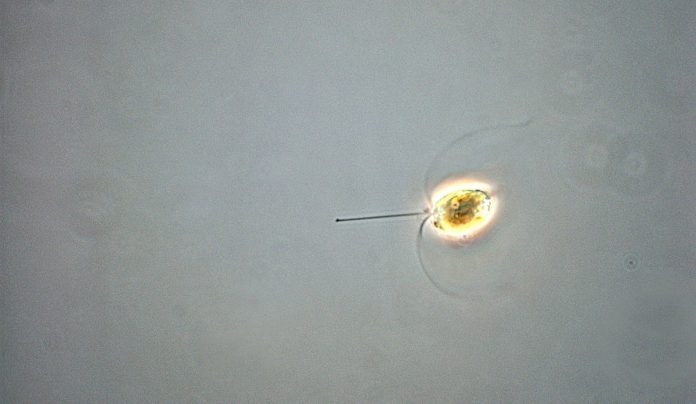Harmful growth of Chrysochromulina leadbeaterii has caused massive salmon death in the north of Norway. The algae are common along the Norwegian coast.
Microalgae are essentially harmless to other marine life and are really essential in the food chain. They are the grass of the sea and form the basis of the marine food chains, writes The Norwegian Institute of Marine Research.
“But a few species of microalgae are referred to as harmful and some of these may lead to mortality in fish and other marine organisms,” said marine scientist and algae expert Lars-Johan Naustvoll.
The fact that marine life has died of algae blooms in Norway has been particularly related o the species Chrysochromulina leadbeaterii, Prymnesium polyepis (formerly Chrysochromulina polylepis), Prymnesium parvum, Pseudochattonella farcimen and Karenia mikimotoi (Gyrodinium aureolum).
It has now been confirmed that it is Chrysochromulina leadbeaterii that has resulted in farmed fish have died in the cages in in Northern Norway.
Common along the Norwegian coast
Chrysochromulina leadbeaterii is phytoplankton that flows freely in the water masses. The species is relatively common and can be observed in the spring, but usually only in low numbers. In such cases, it is only part of the vast diversity of microalgae found in our coastal waters. Rarely do the algae appear in quantities that can be referred to as blooms and which can result in fish dying.

“The species then goes from being a natural part of the phytoplankton to becoming a harmful algae bloom,” said Naustvoll.
This is not the first time this species is associated with the death of salmon in the area in question. A major bloom took place in May and June 1991, as well as a minor growth in May 2008.
Damages the gills
“Wild fish swim away from the fjord or go deeper at such a bloom, but the farmed salmon, on the other hand, has no opportunity to escape. That’s why we get this fish death,” said Naustvoll.
There are studies suggesting that the algal species secretes hemolytic compounds. In contact with the gills of the fish, this leads to injuries that can result in the fish not getting enough oxygen and eventually dying.
At moderate concentrations, before it becomes fatal, the algae can cause the fish to change behaviour.
Spreads with the flow
Through observations of behavioural change and fish death, the researchers can form a picture of where the blooming takes place.
“We closely follow the situation by gathering information from the affected areas. Together with models for water flows, we try to provide the salmon farmers with information on the further spread of the bloom,” said Naustvoll.
He emphasizes that it is difficult to say for sure how the situation will develop.
“We cannot guarantee that the algae will spread as our forecasts indicate. There are many factors that count,” he said.
In addition, it is demanding to say how long the problem will persist in the affected areas.
May run out of nourishment
“The algae consume nutrients. As a result, the increase in algae will be reduced as the nutrient salts are used up,” said Naustvoll.
Blooms that “are stuck” inside fjords will be able to consume the nutrients and die out. If the algae, on the other hand, is transported to new areas that are still nourished, they will be able to continue the growth.
From previous cases, it is also seen that weather changes with increasing wind and turbulence in the water cause the bloom to decrease.


